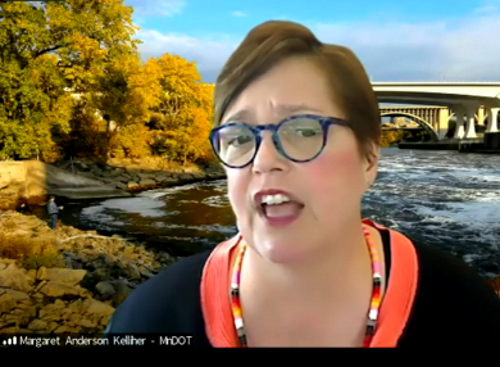FEDERAL ACTION
House Passes ‘INVEST in America’ Reauthorization Bill – AASHTO Journal
U.S. Department of Transportation Announces $905.25 Million in Proposed Awards for the FY 2021 Infrastructure for Rebuilding America (INFRA) Grant Program – USDOT
INFRASTRUCTURE RESILIENCE AND SUSTAINABILITY
Secretary Buttigieg Speaks at NYC Penn Station on Infrastructure, Hudson Tunnels – USDOT
Maryland Awards Climate Resilience Grants to Seven Communities – Maryland Department of Natural Resources
Massachusetts Senate passes $300 million transportation infrastructure bill – Boston Herald
Will Miami’s Growth Be Cut Short by Sea-Level Rise? – CityLab
Infrastructure deal offers far-reaching ag benefits – Agri-Pulse
Infrastructure spending has always involved social engineering – The Conversation (Commentary)
AIR QUALITY
Nine State DOTs Win ‘Low-No’ Emission Grants from FTA – AASHTO Journal
As car-centric Cape Cod tries to cut emissions, transportation is a challenge – Energy News Network
Tennessee Valley Authority Considers Replacing Coal With Gas – AP
ENVIRONMENTAL JUSTICE
Flood relocation programs more disruptive to those who don’t live in white or affluent neighborhoods – Rice University
The U.S. Transportation Department’s Quest to Become a Driver of Justice – CityLab
Can public-private collaboration boost transport equity? – Cities Today
NATURAL RESOURCES
A watershed moment: How Boston’s Charles River went from polluted to pristine – Grist
L.A. Is Now a Certified Wildlife Habitat. Here’s Why It’s a Big Deal – Los Angeles Magazine
A wake-up call for water resilience in the West – The Hill (Opinion)
CULTURAL RESOURCES
National Parks Could Receive Billions For Repairs From Transportation Bill – National Parks Traveler
HEALTH AND HUMAN ENVIRONMENT/ACTIVE TRANSPORTATION
Making the Route 1 Corridor More Walkable and Safer for Pedestrians, Bicyclists – Hyattsville Wire
GO Transit increases walking and cycling access to GO Stations – Metrolinx
Capital Bikeshare gears up for expansion as commuters resume pre-pandemic routines – Washington Post
Paddle Safe Twin Ports: A data-based website keeping Lake Superior paddlers safe – KBJR-TV
Q&A: North Park’s bikeway project should be complete this month. How will it impact the community? – San Diego Union-Tribune
TRB RESOURCES/ANNOUNCEMENTS
How We Move Matters: Exploring the Connections between New Transportation and Mobility Options and Environmental Health–A Workshop – TRB
TRB Webinar: Are We All in the Same Boat? Involving Communities in Coastal Resilience – TRB
TRB Webinar: Public Transit as a Climate Solution – TRB
Deploying Transportation Resilience Practices in State DOTs – NCHRP
TTI Publishes 2021 Urban Mobility Report – Texas A&M Transportation Institute
FEDERAL REGISTER NOTICES
National Environmental Justice Advisory Council; Notification for a Virtual Public Meeting – EPA (Notification)
Approval of Air Quality Implementation Plans; New York; Infrastructure Requirements for the 2015 Ozone, National Air Quality – EPA (Proposed rule)
Approval of Air Quality Implementation Plans; New York; 2011 Periodic Emission Inventory SIP for the Ozone Nonattainment Areas – EPA (Proposed rule)
Air Plan Approval; Michigan; Partial Approval and Partial Disapproval for Infrastructure SIP Requirements for the 2015 Ozone NAAQS – EPA (Proposed rule)
Clean Air Act Advisory Committee (CAAAC): Notice of Meeting – EPA (Notice)
Notice of Availability of the Final Environmental Impact Statement for the Proposed Blue Valley Land Exchange, Grand and Summit Counties, CO – Bureau of Land Management (Notice)
Notice of Intent To Prepare an Environmental Impact Statement for Proposed Wind Energy Facility Offshore Virginia – Bureau of Ocean Energy Management (Notice; request for comments)


